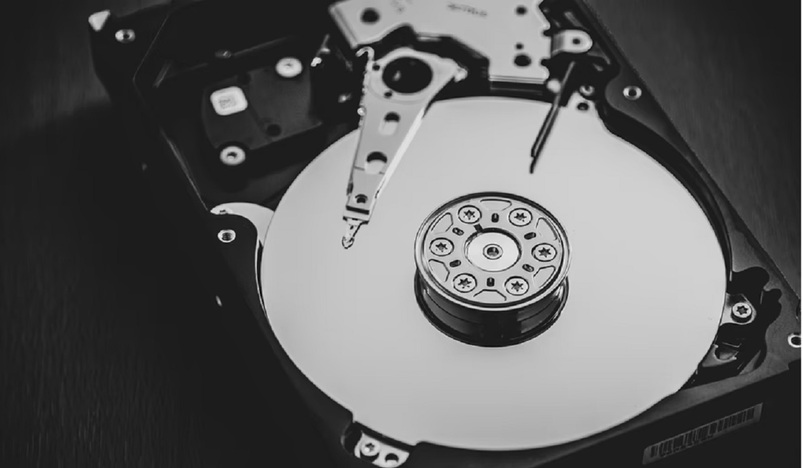
Digital Data Storage
Records management is not just a modern concept. Since the onset of recorded history, we have always been searching for better ways to record and keep information. From mural tablets and baked clays to papyrus and parchments, the means of recording and preserving information evolved until the invention of paper which remained the primary medium of documentation and circulation of knowledge for the better part of the common era history and is still largely used today.
It was the advent of digital media, however, that transformed everything and introduced a whole new chapter in the world of information archival. In this paperless era where information is overabundant and randomly accessed, media preservation is challenged in a variety of ways. Apart from the sheer volume of information produced every day, the speed at which new storage devices are introduced makes archiving data an uncertain and intimidating task. Moreover, no media storage device has been around long enough for us to tell whether they are future-proof for data backup or archiving purposes.
It's almost certain that all storage media will eventually fail. Not only that, but as the trend has shown, they become obsolete long before they wear out. Floppy disks were conventionally used from the 1970s up until the 1990s when they were replaced by compact disks whose life cycles were even shorter as they became obsolete by the introduction of flash drives and new digital formats.
Therefore, true long-term preservation of information involves transferring them over to new forms of storage before the previous ones fail. We can protect the integrity of information in the long run only by moving them between temporary hosts while making proper backups in the process.
The 3-2-1 Strategy
The 3-2-1 rule states that in order to maintain data integrity, we should keep at least 3 copies of the data on (at least) 2 types of media while keeping (at least) one of those media off-site. This rule is based on the premise that there is no means of storage that is completely infallible and if we want the data to be preserved through time, we must keep it on multiple media to maximize its chances of survival.
Different storage media fail for different reasons. For example, hard drives are very susceptible to mechanical and physical damage. Optical media are susceptible to rot and deteriorate over time but are much more resilient to physical damage such as shocks and water exposure than hard drives. By keeping multiple instances of the data on different storage media, we attempt to cover all the bases in terms of the weaknesses inherent to each storage type.
The risks that threaten our data are not limited to the means of storage. Copies of data should be stored somewhere away from their original source so that disasters such as fire, flood, or theft do not destroy them at the exact point in time and location.
Different Media and Their Life Expectancies
Now that we have established the necessity of having multiple copies at diverse places on various media with scheduled rewrites, let’s talk about some options for the storage of digital data and their life expectancy.
Optical Media
While anecdotal claims of some manufacturers state that optical disks last for a hundred years, research has shown that optical media can deteriorate and lose data over time even if stored in a place protected from light or any other type of damage. This deterioration mainly happens due to the oxidization of some particles that get stuck between the layers of the disk at the time of manufacturing which can destroy the data in just a year.
Based on a publication by the Canadian Conservation Institute, disks can last anything between 5 to 50 years depending on the quality of materials used in their manufacturing. However, considering the number of factors that affect their longevity, optical disks seem to be fragile and unstable for long-term storage.
Hard Drives
Hard drives form the core of a computer’s memory. They consist of a set of high-speed spinning platters with a magnetic coating to store the data and magnetic read/write heads that are placed at a very close distance (as close as a few nanometers) from the disks. The moving parts and delicate mechanics of the hard drives make them more vulnerable to physical damages such as shocks, heat, and drops. However, if hard drives are kept in perfect conditions away from any external harm, they are expected to last about 5 to 10 years.
SSDs and Flash Drives
SSDs, thumbs sticks, and flash memories are all based on flash technology. The technology used in producing these storage devices is drastically different from the ones discussed above. SSDs wear out the more data is written to them meaning they have finite read/write cycles. While the number of these cycles is considerably large, they may be reached quickly depending on how they are used. However, if one uses an SSD drive solely for archiving purposes meaning that the data is written to it just once, it’s possible to preserve the data for more than a decade.
.jpg)
Qatar Secures Place Among the World's Top 10 Wealthiest Nations
.jpg)
Hamad International Airport Witnesses Record Increase in Passenger Traffic

Saudi Arabia: Any visa holder can now perform Umrah

What are Qatar's Labour Laws on Annual Leave?
Leave a comment